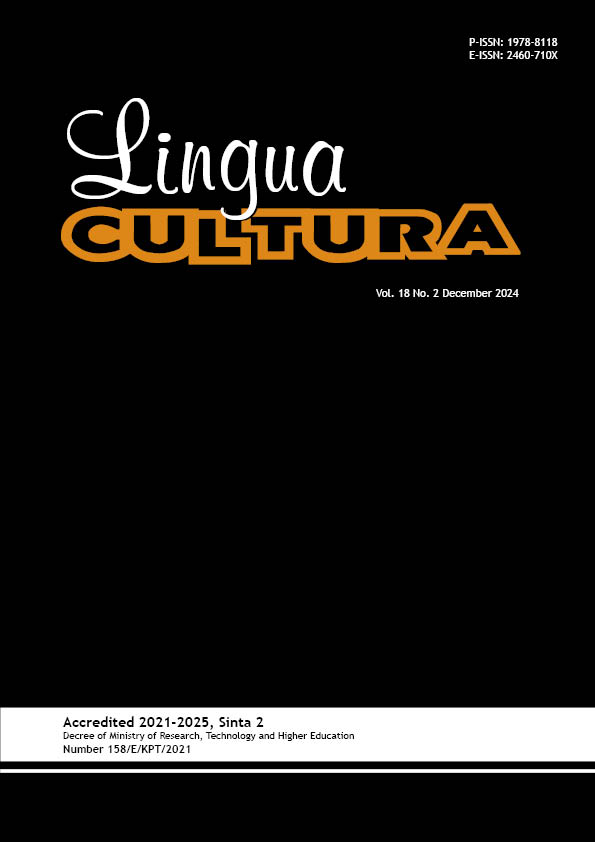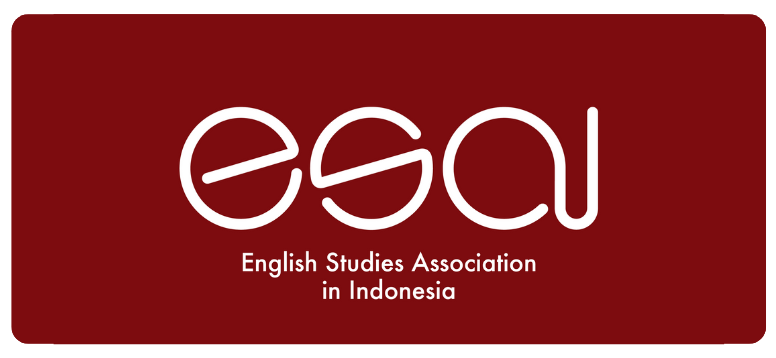Jermal: De-romanticization of an (artificial) island in Indonesian Cinema
DOI:
https://doi.org/10.21512/lc.v18i2.12391Keywords:
artificial island, de-romanticisation, Indonesian film, fishing platformAbstract
As an archipelagic nation, Indonesian films are inseparable from depicting islands. However, most of the mainstream Indonesian popular films tend to romanticize the island, especially when referring to other islands besides the “mainland” Java. For example, when films are set in Bali, Lombok, or other tourist islands, they tend to capture the island as an exotic, beautiful, and magical place. The film Jermal, on the other hand, moves away from romanticizing the “island” by depicting a harsh reality through its narrative, dialogue, and visuals. The research investigated a 2008 Indonesian film, Jermal (Fishing Platform), directed by Ravi Bharwani, by focusing on how the film de-romanticized the island through a more realistic and harsh portrayal of people living in a jermal/fishing platform. The research was qualitative research using a film studies approach. The method was observation and data collection that were drawn from the film’s cinematography and mise-en-scène aspects, such as camera movement and position, props, characters, actions, and dialogue. After collecting and interpreting the visual data, the researcher finds that the film manages to de-romanticize the notion of an “island” that is often seen as a place of beauty or mystery through visualization as reflected in the cinematography and mise-en-scène aspects.
References
Abidin, Z., & Suyatno. (2024). Simbol keterbelakangan pendidikan pada film Laskar Pelangi. BAPALA, 11(1), 62-70.
Baidhowah, A. R. (2022). Explaining decentralization performance in Indonesia: Member of parliament decision, political networks, and constitution amendment. Jurnal Bina Praja, 14(1), 97-109. https://doi.org/10.21787/jbp.14.2022.97-109.
Bálint, K. E., & Rooney, B. (2019). Narrative sequence position of close-ups influences cognitive and affective processing and facilitates theory of mind. Art and Perception, 7(1), 27-51. https://doi.org/10.1163/22134913-20191095.
Barker, T. (2019). Indonesian cinema after the new order: Going mainstream. Hong Kong University Press.
Bharwani, R., Makarim, R., & Seunke, O. (2009). Jermal: Press kit for a feature-film. ECCO Films Indonesia. http://www.eccofilms.com/data/2009/02/10/Jermal/PressKit_-_Indonesian.pdf
Diprose, R., McRae, D., & Hadiz, V. R. (2019). Two decades of reformasi in Indonesia: Its illiberal turn. Journal of Contemporary Asia, 49(5), 691-712. https://doi.org/10.1080/00472336.2019.1637922.
Erlangga, C. Y., Utomo, I. W., & Gogali, V. A. (2023). Makna satire dalam film Naga Naga Naga. Jurnal Ilmu Komunikasi (J-IKA), 10(1), 55-62.
Film Indonesia. (n.d.). Penghargaan Jermal. https://filmindonesia.or.id/film/lf-j006-08-992573/penghargaan
Fitri, A., & Mastanora, R. (2022). Analisis budaya Minangkabau dalam film Merantau. Kinema: Jurnal Komunikasi dan Penyiaran, 1(2), 113-128.
Halimah. (2023). Analisis unsur sinematografi dalam membangun realitas cerita pada film Cross the Line [Skripsi, Universitas Bina Sarana Informatika]. https://elibrary.bsi.ac.id/skripsi/D24400781707719703/analisis-unsur-sinematografi-dalam-membangun-realitas-cerita-pada-film-cross-the-line
Hanmakyugh, T. T. (2020). The psychology of camera shots: A determinant for audience perception of film images. Ama: Journal of Theatre and Cultural Studies, 14(1), 104-113.
Iswatiningsih, D., & Fauzan. (2021). Semiotika budaya kemaritiman masyarakat Indonesia pada syair lagu. Satwika: Kajian Ilmu Budaya dan Perubahan Sosial, 5(2), 214-228. https://doi.org/10.22219/satwika.v5i2.18073.
MP, N. C., Muliadi, & Zelfia. (2022). Semiotic analysis on a perfect fit film in the Bugis and Balinese cultural approach. RESPON: Jurnal Ilmiah Mahasiswa Ilmu Komunikasi, 3(3), 219-230. https://doi.org/10.33096/respon.v3i3.132.
Palupi, I., Widyatwati, K., & Falah, F. (2022). Nilai moral film Kulari ke Pantai Karya Riri Riza (Tinjauan sosiologi sastra). Wicara: Jurnal Sastra, Bahasa, dan Budaya, 1(2), 68-74.
Purwanto, E., Sjarief, R., & Anwar, C. (2021). The effect of the innovation resistance factors on the digital fishery platform acceptance in developing country. Review of International Geographical Education Online (RIGEO), 11(5).
Robot, M. (2020). Membaca wajah ibu kandung dan ibu pertiwi dalam film Tanah Air Beta: Sebuah kajian semiotik. Optimisme: Jurnal Bahasa, Sastra dan Budaya, 1(2), 17-22.
Rumtini, R., Suwartono, T., Sulistyo, H., Sartika, E., & Marufah, D. W. (2023). seeing education in Indonesia: How movie represents the inequality in Eastern Indonesia. Panacea Journal of Linguistics & Literature, 2(2), 317-333.
Sartre, W. Z., & Aviandy, M. (2024). Dinamika konflik dan identitas hibrida dalam film Cahaya dari Timur: Beta Maluku karya Angga Dwimas Sasongko melalui pendekatan poskolonialisme. Populis: Jurnal Sosial dan Humaniora, 9(1), 13-25.
Siadari, H. (2021). Upaya perlindungan dan keselamatan kerja pekerja anak di Jermal. Dharmasisya Jurnal Program Magister Hukum FHUI, 1(3), 1245-1258.
Sreekumar, K., & Hassan, G. (2020, November 9). A study of artificial islands. Centre for Public Policy Research (CPPR). https://www.cppr.in/policy-briefs/a-study-of-artificial-islands
Sutandio, A. (2020). Dasar-dasar kajian sinema. Penerbit Ombak.
Wibawa, S. (2020). Representasi anak-anak dalam film Jermal. Jurnal Ilmu Komunikasi, 17(2), 217-232. https://doi.org/10.24002/jik.v17i2.2195.
Yassin, A. D., Masram, H., Shafii, H., Masrom, M. A. N., Razali, M. N., & Adnan, Y. M. (2023). The potential of artificial island development in Malaysia’s property market. Planning Malaysia, 21(1), 134-149. https://doi.org/10.21837/pm.v21i27.1290.
Downloads
Published
How to Cite
Issue
Section
License
Copyright (c) 2024 Anton Sutandio

This work is licensed under a Creative Commons Attribution-ShareAlike 4.0 International License.
Authors who publish with this journal agree to the following terms:
a. Authors retain copyright and grant the journal right of first publication with the work simultaneously licensed under a Creative Commons Attribution License - Share Alike that allows others to share the work with an acknowledgment of the work's authorship and initial publication in this journal.
b. Authors are able to enter into separate, additional contractual arrangements for the non-exclusive distribution of the journal's published version of the work (e.g., post it to an institutional repository or publish it in a book), with an acknowledgment of its initial publication in this journal.
c. Authors are permitted and encouraged to post their work online (e.g., in institutional repositories or on their website) prior to and during the submission process, as it can lead to productive exchanges, as well as earlier and greater citation of published work.
USER RIGHTS
All articles published Open Access will be immediately and permanently free for everyone to read and download. We are continuously working with our author communities to select the best choice of license options, currently being defined for this journal as follows: Creative Commons Attribution-Share Alike (CC BY-SA)


















